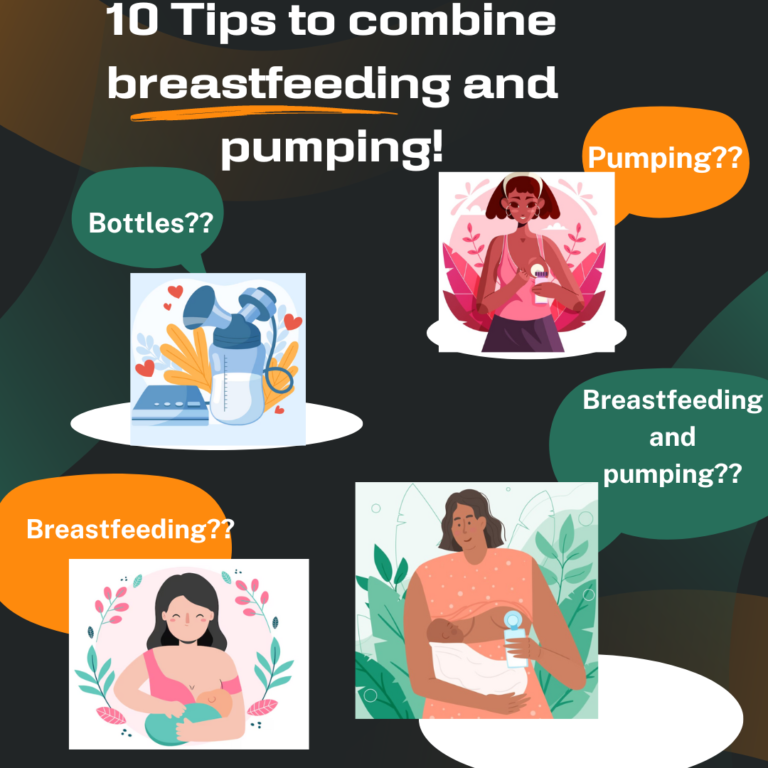Mastering the Side-Lying Position for Breastfeeding: A Comprehensive Guide
Breastfeeding is a beautiful and essential aspect of motherhood, providing vital nourishment and emotional bonding between a mother and her baby. Breast milk is uniquely designed to meet the nutritional needs of infants, promoting optimal growth and development. While breastfeeding comes naturally to many mothers and babies, achieving a comfortable and effective latch is crucial for a successful breastfeeding journey.

The correct breastfeeding position plays a significant role in ensuring that both the mother and baby have a positive experience during nursing. Proper positioning not only ensures that the baby latches effectively and receives adequate milk but also prevents discomfort and potential breastfeeding challenges for the mother.
When to Breastfeed in the Side-Lying Position
Breastfeeding is a beautiful bonding experience between a mother and her baby. While most mothers are familiar with the traditional sitting-up breastfeeding position, there is another equally beneficial and convenient method – side-lying breastfeeding. This article explores the ins and outs of the side-lying position for breastfeeding and provides valuable tips and insights to make it a successful and comfortable experience for both you and your baby.
How do I breastfeed lying down?
Breastfeeding in the side-lying position can be a wonderful addition to your breastfeeding routine. It provides numerous benefits, including enhancing bonding, promoting relaxation, and addressing various breastfeeding challenges. Whether you’re recovering from childbirth, dealing with health concerns, or simply looking for a more comfortable way to nurse your baby, the side-lying position offers a supportive and nurturing approach to breastfeeding.
Remember to ensure a safe and comfortable environment for both you and your baby, and don’t hesitate to seek guidance from a lactation consultant or healthcare provider if needed. Embrace this position to enhance your breastfeeding journey and strengthen the bond with your little one.Let’s delve into more details about when to consider using the side-lying position:
In the Hospital
Breastfeeding in the side-lying position can be beneficial during your hospital stay after giving birth. Hospitals can be busy and overwhelming, and the side-lying position allows you to find a moment of peace and connection with your baby. It also provides an opportunity for you to rest and recover from labor and delivery while nourishing your newborn.
After a Cesarean Section
Recovering from a Cesarean section (C-section) requires extra care and attention. The side-lying breastfeeding position is particularly helpful for mothers who have undergone a C-section, as it reduces strain on the abdominal muscles and incision area. Placing a pillow or rolled-up blanket over the incision can provide additional support and comfort while nursing your baby.
At Night
Nighttime feedings can be exhausting for new mothers, especially when you’re already fatigued from the demands of caring for a newborn. Side-lying breastfeeding at night allows you to feed your baby while lying down, enabling you to relax and even doze off during the feeding. Creating a safe sleep environment is essential.
With Large Breasts
Women with larger breasts may find side-lying breastfeeding more comfortable and manageable. Lying down allows the breast tissue to spread out naturally, making it easier for the baby to latch on and maintain a good latch. Placing a rolled-up receiving blanket under your breast for additional support can enhance the feeding experience for both you and your baby.

When Sitting Up Is Uncomfortable
If you experience discomfort or pain when sitting up for extended periods, side-lying breastfeeding can be a lifesaver. It takes the pressure off your back, neck, and shoulders, allowing you to focus on feeding your baby without added physical strain.
If You’re Tired or Sick
Breastfeeding can be demanding, especially when you’re feeling tired or unwell. Side-lying breastfeeding enables you to rest while nursing, providing an opportunity to breastfeed and take care of yourself simultaneously. This position can be particularly useful if you have a contagious illness, as it reduces close contact with your baby, helping to minimize the risk of transmission.
Breastfeed and rest at the same time.
One of the most significant advantages of side-lying breastfeeding is the ability to breastfeed and rest simultaneously. This position can be especially valuable during growth spurts or cluster feeding periods when babies nurse frequently. Side-lying allows you to conserve energy and maintain your milk supply while meeting your baby’s needs.
Breastfeeding When You Are Sick
When you’re under the weather, your body needs rest and nourishment. Side-lying breastfeeding allows you to take care of your baby’s nutritional needs while conserving your energy and promoting a faster recovery. It also reduces the risk of passing on the illness to your baby by minimizing close contact.
When Baby Is Sleepy
Babies are often more relaxed and less fussy in the side-lying position. If your baby is sleepy or drowsy, side-lying breastfeeding can make it easier for them to latch and stay engaged during the feeding.
When is side-lying a good breastfeeding option? 10 Steps To Follow
Side-lying breastfeeding can be particularly helpful for mothers who have undergone a C-section. Lying on your side reduces pressure on the incision site and abdominal muscles, which may be sensitive during the recovery period. So to prevent you from injuries, here are the 10 steps to follow:
- Choose the Right Surface: Select a firm mattress or a comfortable surface for side-lying breastfeeding. Ensure that the bed or mattress is large enough to accommodate you and your baby with ample space to move comfortably.
- Find the Optimal Position: Lie on your side facing your baby, with your baby’s body aligned with yours. Make sure your baby’s nose is opposite your nipple for easy latching.
- Provide Adequate Support: To ensure a comfortable and well-aligned breastfeeding position, use pillows or rolled-up blankets behind your back for support. Place another pillow or rolled-up blanket between your knees to maintain proper hip alignment.
- Position Your Baby Correctly: Gently bring your baby close to your body, tummy to tummy, and support their head and neck with your arm. Avoid turning your baby’s head to an extreme angle, which could affect their latch.
- Check the Latch: Ensure that your baby’s mouth is wide open and properly latched onto your breast. A good latch is essential for effective milk transfer and preventing nipple soreness.
- Use Gravity to Your Advantage: Utilize gravity to assist with milk flow by positioning your baby’s nose at or slightly above your nipple. This position helps ensure a smooth milk flow without causing discomfort to your baby.
- Try Different Breastfeeding Holds: Experiment with various breastfeeding holds to find the most comfortable position for you and your baby. Some mothers find the cradle hold or football hold while lying down works best, depending on their breast size and baby’s age.
- Keep Baby Safe: Remove any pillows or loose bedding near your baby to reduce the risk of suffocation or overheating. Keep the sleep space safe and free from any potential hazards.
- Stay Relaxed and Comfortable: Breastfeeding in the side-lying position should be a comfortable and relaxing experience for both you and your baby. Use this time to bond and enjoy the closeness with your little one.
- Switch Sides Carefully: When you’re ready to switch sides, turn over slowly and mindfully to the other side. Reposition your baby and ensure that they are securely latched onto the other breast.
In conclusion, side-lying breastfeeding offers numerous advantages for mothers and babies alike. It can be an excellent option for postpartum recovery, C-section healing, enhancing milk flow, and promoting bonding. By following the ten steps mentioned above, you can create a safe and comfortable environment for side-lying breastfeeding, ensuring a positive experience for both you and your baby.
Is the side-lying position safe for breastfeeding?
The side-lying position is generally safe for breastfeeding when done correctly. Ensure there are no pillows or loose bedding near your baby to prevent suffocation risks. Always pay attention to your baby’s latch to ensure they are feeding effectively and comfortably.
Do I need to burp the baby after side-lying breastfeeding?
Yes, burping your baby after side-lying breastfeeding is essential to help them release any trapped air. Gently hold your baby upright against your shoulder and pat their back to encourage burping.
Will a side-lying breastfeeding position help improve my baby’s latch?
The side-lying position can aid in achieving a more natural latch for some babies. It allows them to use their instincts to latch onto the breast and can be particularly helpful for babies who struggle with latching in other positions.
What are the benefits of side-lying breastfeeding?
Side-lying breastfeeding offers a host of benefits for both mothers and babies, making it a popular and valuable breastfeeding position. This position, where the mother lies on her side and the baby faces her to nurse, comes with several advantages that contribute to a positive breastfeeding experience.
Side-lying breastfeeding offers several benefits:
- Enhanced Relaxation: It allows both you and your baby to relax during feeding sessions.
- Improved Comfort: Especially useful for moms recovering from childbirth or dealing with physical discomfort.
- Easier Night Feedings: Makes nighttime breastfeeding more manageable.
- Enhanced Bonding: Promotes skin-to-skin contact, fostering a stronger bond between mother and baby.
- Better Breast Support: Particularly advantageous for women with larger breasts.
Side effects of breastfeeding while lying down
While side-lying breastfeeding is generally safe and beneficial for many mothers and babies, there are some potential side effects or challenges to be aware of. It’s essential to address these concerns and take precautions to ensure a positive and safe breastfeeding experience in the side-lying position. Here are some general side effects to consider:
- Blocked Milk Ducts: Improper positioning or latch during side-lying breastfeeding can increase the risk of blocked milk ducts. Blocked ducts can cause discomfort, and swelling, and even lead to mastitis, a painful breast infection.
- Engorgement: If side-lying breastfeeding leads to inadequate drainage of the breast, it can contribute to breast engorgement, where the breasts become overly full and uncomfortable.
- Nipple Soreness: Ensuring a proper latch is crucial during side-lying breastfeeding to prevent nipple soreness or pain. An improper latch can lead to cracked or damaged nipples, making breastfeeding uncomfortable for the mother.
- Insufficient Milk Transfer: For some babies, side-lying breastfeeding may not result in efficient milk transfer. If your baby is not effectively draining the breast, it could lead to reduced milk supply over time.
- Safety Concerns: It’s essential to create a safe sleep environment when side-lying breastfeeding to minimize the risk of suffocation or accidental smothering. Clear away pillows and loose bedding near the baby to ensure a safe sleep space.
- Comfort Issues: Some mothers may find it challenging to find a comfortable position for side-lying breastfeeding. Ensuring proper support with pillows or rolled-up blankets can help create a more comfortable feeding experience.
- The difficulty for Premature Babies: Premature babies may find it more challenging to breastfeed effectively in the side-lying position due to their smaller size and potential for feeding difficulties.
- Uneven Milk Supply: If a mother consistently breastfeeds from one breast while lying down, it can lead to an uneven milk supply, with one breast producing more milk than the other.
- Baby’s Safety and Awareness: In the side-lying position, some babies may be less alert during feedings, leading to reduced swallowing and the potential for poor weight gain.
To mitigate these side effects and ensure a positive experience, it’s crucial to seek guidance from a lactation consultant or healthcare professional. They can provide personalized advice and support to address any specific challenges you may encounter with side-lying breastfeeding.
Conclusion
Breastfeeding in the side-lying position can be a wonderful addition to your breastfeeding routine. It provides numerous benefits, including enhancing bonding, promoting relaxation, and addressing various breastfeeding challenges. Whether you’re recovering from childbirth, dealing with health concerns, or simply looking for a more comfortable way to nurse your baby, the side-lying position offers a supportive and nurturing approach to breastfeeding.
Remember to ensure a safe and comfortable environment for both you and your baby, and don’t hesitate to seek guidance from a lactation consultant or healthcare provider if needed. Embrace this position to enhance your breastfeeding journey and strengthen the bond with your little one.
References
- Arora G, Jelly P, Mundhra R, Sharma R. Comparison of L-Shape and Side-Lying Positions on Breastfeeding Outcomes among Mothers Delivered by Cesarean Section: A Randomized Clinical Trial. J Caring Sci. 2021 Aug 23;10(3):121-128. doi: 10.34172/jcs.2021.025. PMID: 34849355; PMCID: PMC8609119.
- Raczyńska A, Gulczyńska E, Talar T. Advantages of side-lying position. A comparative study of positioning during bottle-feeding in preterm infants (≤34 weeks GA). J Mother Child. 2022 Jun 9;25(4):269-276. doi: 10.34763/jmotherandchild.20212504.d-22-00008. PMID: 35675828; PMCID: PMC9444194.
- Bashiri, A., Amiri-Farahani, L., Salehiniya, H. et al. Comparing the effects of breastfeeding in the laid-back and cradle position upon the experiences of primiparous women: a parallel randomized clinical trial. Trials 24, 109 (2023). https://doi.org/10.1186/s13063-023-07143-0
- Murphy, Elizabeth. (2001). ‘Breast is Best’: Infant Feeding Decisions and Maternal Deviance. Sociology of Health & Illness. 21. 187 – 208. 10.1111/1467-9566.00149.
Frequently asked questions
- Is side-lying breastfeeding safe for newborns and young infants?
Yes, side-lying breastfeeding is generally safe for newborns and young infants when done correctly. It can be particularly helpful for mothers recovering from childbirth, experiencing physical discomfort, or seeking a more relaxed feeding position. However, it’s essential to ensure a safe sleep environment and maintain proper positioning and support to minimize any risks.
2. How can I ensure a proper latch while breastfeeding in the side-lying position?
To ensure a proper latch while side-lying breastfeeding, bring your baby close to your body, tummy to tummy, and support their head and neck with your arm. Make sure your baby’s mouth is wide open, and their lips are flanged outward to achieve a deep latch. Positioning your baby’s nose opposite your nipple can help facilitate a good latch and effective milk transfer.
3. Can I use a breastfeeding pillow or support while side-lying breastfeeding?
Yes, you can use a breastfeeding pillow or rolled-up blankets for added support and comfort during side-lying breastfeeding. Placing a pillow behind your back and between your knees can help maintain proper alignment and reduce strain on your body. However, ensure that the pillow or support does not pose a suffocation hazard to your baby and keep the sleep space safe and free from loose bedding.
4. What are the best tips for creating a safe sleep environment during side-lying breastfeeding?
To create a safe sleep environment during side-lying breastfeeding, remove any pillows, blankets, or other loose bedding from the immediate vicinity of your baby. Ensure that your baby has enough space to move and breathe freely. If you feel drowsy during nighttime feedings, consider using a nursing pillow or breastfeeding support to prevent accidental rolling over while lying down.
5. How do I switch sides while breastfeeding in the side-lying position without disturbing the baby?
To switch sides during side-lying breastfeeding without disturbing your baby, first, bring your baby to a more upright position, supporting their head and neck. Carefully roll over onto your other side while keeping your baby close to your body. Reposition your baby and ensure a proper latch on the other breast. Taking it slowly and mindfully can help ensure a smooth transition between sides.
Please note:
If you have any concerns or questions about side-lying breastfeeding or any other health-related matter, it is crucial to contact a qualified healthcare professional for accurate and personalized guidance. The information provided here is for general knowledge purposes only and should not replace professional medical advice. Health conditions and circumstances can vary from person to person, and a healthcare professional can provide you with the most appropriate and tailored advice for your specific situation.













+ There are no comments
Add yours